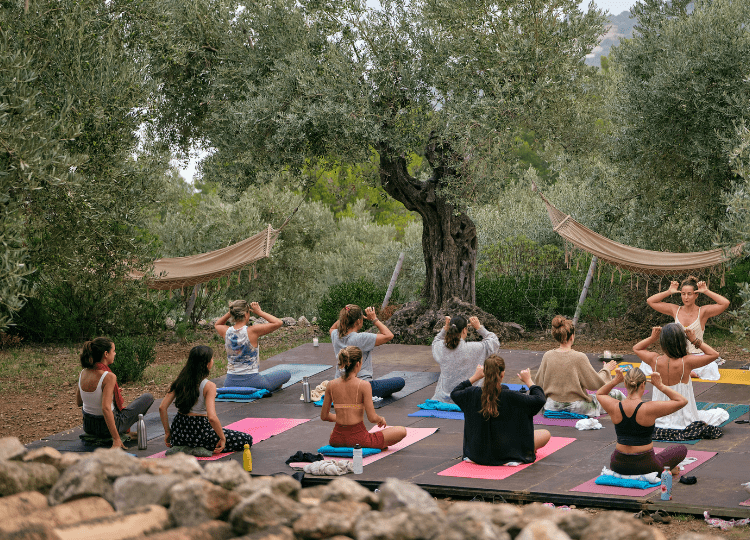A healthy community isn’t just one where people have gyms or parks — it’s a place where wellness is woven into daily life. From active streets and nutritious food access to preventative care and mental health resources, building healthier communities requires a mix of creativity, infrastructure, and local collaboration.
The goal isn’t to create perfect citizens — it’s to make it easier for everyone to make healthier choices, reduce chronic illness, and feel supported in their well-being journey.
Here are practical strategies and insights for fostering wellness in any community, with examples from small towns and big cities alike.
1. Make Fitness Accessible to Everyone
Physical activity is a cornerstone of community health, but access can be a barrier. Public spaces, safe sidewalks, and free or low-cost classes make it easier for people to move.
Ideas to implement:
- Pop-up workout classes in parks
- Community walking or running clubs
- Outdoor yoga or tai chi sessions
Even small efforts, like marking safe routes for walking or biking, encourage residents to integrate movement into daily life.
2. Focus on Nutrition and Food Access
Healthy communities support access to nutritious food. Farmers’ markets, community gardens, and partnerships with local grocers can help ensure residents have affordable, fresh options.
Some practical steps:
- Organize educational workshops on meal prep and healthy eating
- Collaborate with schools to improve cafeteria options
- Launch initiatives like “fruit and veggie prescription programs” with local clinics
Communities that eat well, move more, and understand nutrition see lower rates of obesity, diabetes, and heart disease — simple yet impactful wins.
3. Foster Preventive Health Programs
Prevention is better than treatment — and communities that emphasize preventive health reap long-term benefits. Vaccination drives, regular screenings, and wellness check-ups keep residents healthier and more engaged.
Local healthcare providers can be key partners. For example, in Del Rio, community wellness programs have leveraged partnerships with local health centers and even the Del Rio emergency room to raise awareness around preventive care and community fitness. These efforts not only educate but also build trust between residents and healthcare systems.
4. Make Mental Health Part of the Conversation
Wellness isn’t only physical. Stress, anxiety, and depression affect productivity, relationships, and overall health. Communities can promote mental well-being by:
- Offering accessible counseling or support groups
- Creating safe social spaces for connection
- Hosting community events that foster inclusion and belonging
When mental health is normalized and supported, residents feel empowered to participate fully in community life — and physical health benefits follow naturally.
5. Leverage Local Partnerships
Healthy communities thrive when organizations, businesses, and residents work together. Schools, gyms, non-profits, and healthcare providers can pool resources to create programs that reach more people.
Ideas include:
- Free fitness classes sponsored by local businesses
- Health fairs or wellness festivals
- Workplace wellness initiatives
Partnerships also amplify impact. Hospitals, clinics, and even emergency rooms can support preventive care campaigns, provide education, and lend credibility to programs that encourage residents to adopt healthier lifestyles.
6. Use Public Spaces Creatively
Parks, streets, and community centers are more than meeting places — they’re platforms for health.
- Install outdoor exercise equipment
- Host community walks, runs, or bike events
- Use vacant lots for temporary pop-up gardens or playgrounds
Creative use of public spaces makes wellness visible and social, showing residents that healthy choices are both accessible and enjoyable.
7. Celebrate Small Wins
Community health initiatives don’t always make headlines, but small, measurable wins matter. Celebrate milestones like:
- Increased participation in local fitness classes
- Reduction in sugar-sweetened beverage consumption
- Uptake in preventive screenings
Highlighting these successes motivates residents, encourages consistent participation, and builds momentum for future programs.
8. Educate and Empower Residents
Knowledge is power. Workshops, social media campaigns, and newsletters can inform residents about healthy habits, local resources, and community events.
The more people understand the “why” behind wellness initiatives, the more likely they are to engage consistently. Education paired with actionable opportunities — like walking clubs, nutrition programs, or free screenings — bridges the gap between awareness and behavior change.
9. Use Local Examples to Inspire
Even small towns can show big results. Communities like Del Rio illustrate how collaboration and creativity pay off. By leveraging partnerships with local health centers and the Del Rio emergency room, residents gain access to preventive care, educational resources, and community fitness programs — all of which strengthen public health outcomes.
These models demonstrate that building a healthy community doesn’t require massive budgets — it requires vision, connection, and the willingness to work together for long-term wellness.
The Bottom Line
Building healthier communities isn’t a one-size-fits-all effort. It’s a mosaic of initiatives, partnerships, and creative solutions that meet the unique needs of residents.
From improving physical activity access to supporting mental health, from preventive care campaigns to public engagement, every step counts. Small towns and big cities alike can benefit from thinking holistically about wellness — and by leveraging local resources, partnerships, and inspiration, every community can take meaningful strides toward better health.
